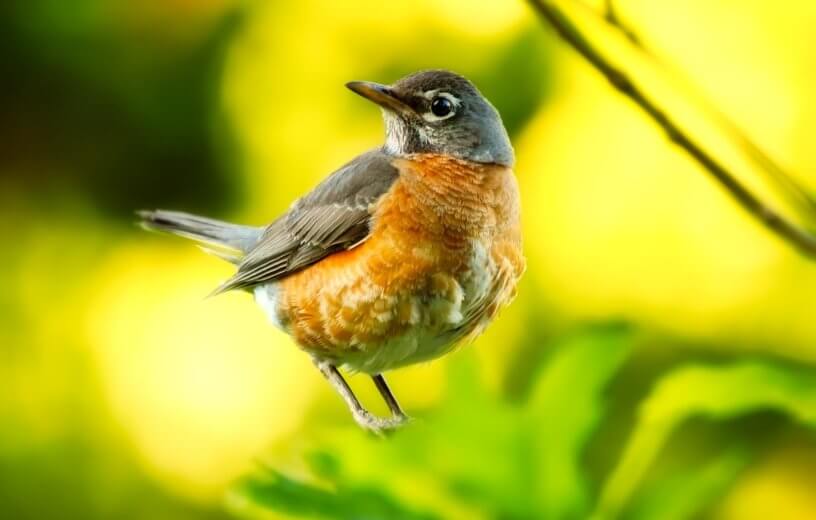NEW YORK — Each Spring, North American robins stretch their wings and migrate north from the U.S. and Mexico to their breeding grounds in Canada and Alaska. Once they’ve traveled over 250 miles to reach home, they spend the summer in pursuit of a mate to build a nest and procreate with before packing up and heading back south.
However, due to climate change warming the planet and bringing springtime to the Arctic earlier and earlier than normal, a new study has found that American robins are beginning to migrate roughly five days earlier every decade since 1994. That equates to about 12 days sooner in 2020 than they were in the early ’90s.
This research was performed by the Earth Institute at Columbia University.
At one of the birds’ main pit stops along the way, Canada’s Slave Lake, the research team has been recording annual spring migration timing for the past 25 years. This data clearly indicates that the birds are migrating earlier and earlier as time goes on.
However, in an effort to better understand the exact environmental cues driving these migration changes, researchers set out to investigate the flight patterns of individual robins. So, after capturing 55 robins at Slave Lake, they fitted the birds with tiny GPS “backpacks.”
“We made these little harnesses out of nylon string,” lead author Ruth Oliver explains in a release. “It basically goes around their neck, down their chest and through their legs, then back around to the backpack.”
These tiny tracking devices are super light, weighing less than a nickel, and were designed to eventually fall off each robin after the tracking period.
The robins’ movements were tracked from April through June. Thanks to the GPS data they had gathered, researchers were able to link up the robins’ movements with various weather patterns (air temperature, snow, wind, rain) that may influence migration patterns.
The ensuing results showed that the birds travel north earlier when winters are very warm and dry. The robins also often adjust their itinerary depending on the weather they encounter along the way.
“The one factor that seemed the most consistent was snow conditions and when things melt. That’s very new,” Oliver adds. “We’ve generally felt like birds must be responding to when food is available — when snow melts and there are insects to get at — but we’ve never had data like this before.”
“With this sort of quantitative understanding of what matters to the birds as they are migrating, we can develop predictive models” that forecast the birds’ responses as the climate continues to warm. Because the timing of migration can indirectly influence the reproductive success of an individual, understanding controls over the timing of migratory events is important,” comments co-author & associate research professor Natalie Boelman.
At least for now, the robins are doing a good job of staying on top of these changing weather patterns. That being said, the study’s authors ponder just how much flexibility the birds are capable of.
“The missing piece is, to what extent are they already pushing their behavioral flexibility, or how much more do they have to go?” Oliver says.
The study is published in Environmental Research Letters.
